|
In this picture you can see the rocket on its' decent. This rocket is my first backslider.
| Rocket backsliding |
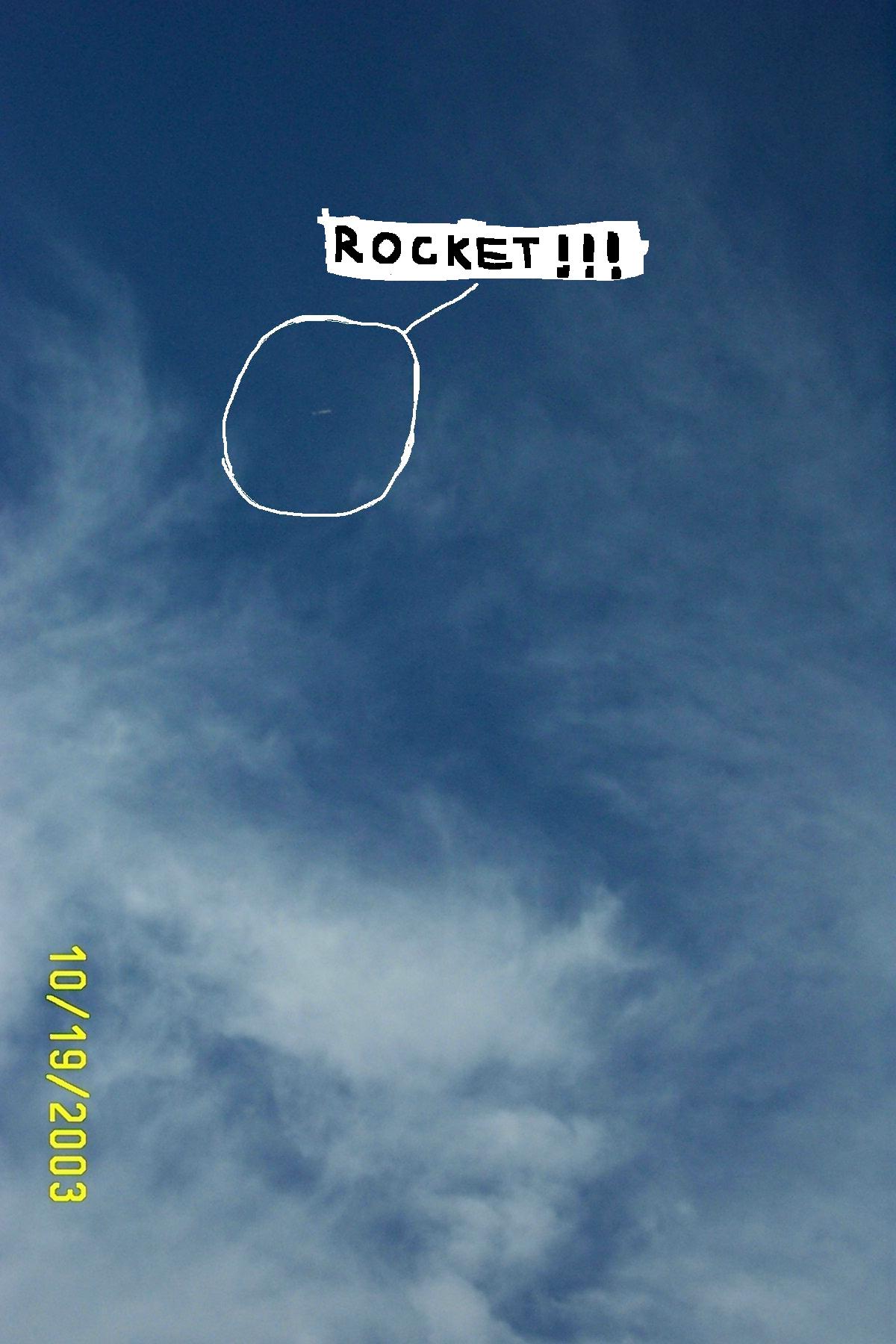
|
This is a picture of my dad and I standing next to our water rocket, with an Este's space shuttle sitting on the top of the
rocket. The space shuttle caused the rocket to be unstable. As a result the rocket went about 50 feet, and then tumbled back
to earth. Although it wasn't a complete success it still looked cool.
| Backslider with Estes shuttle |
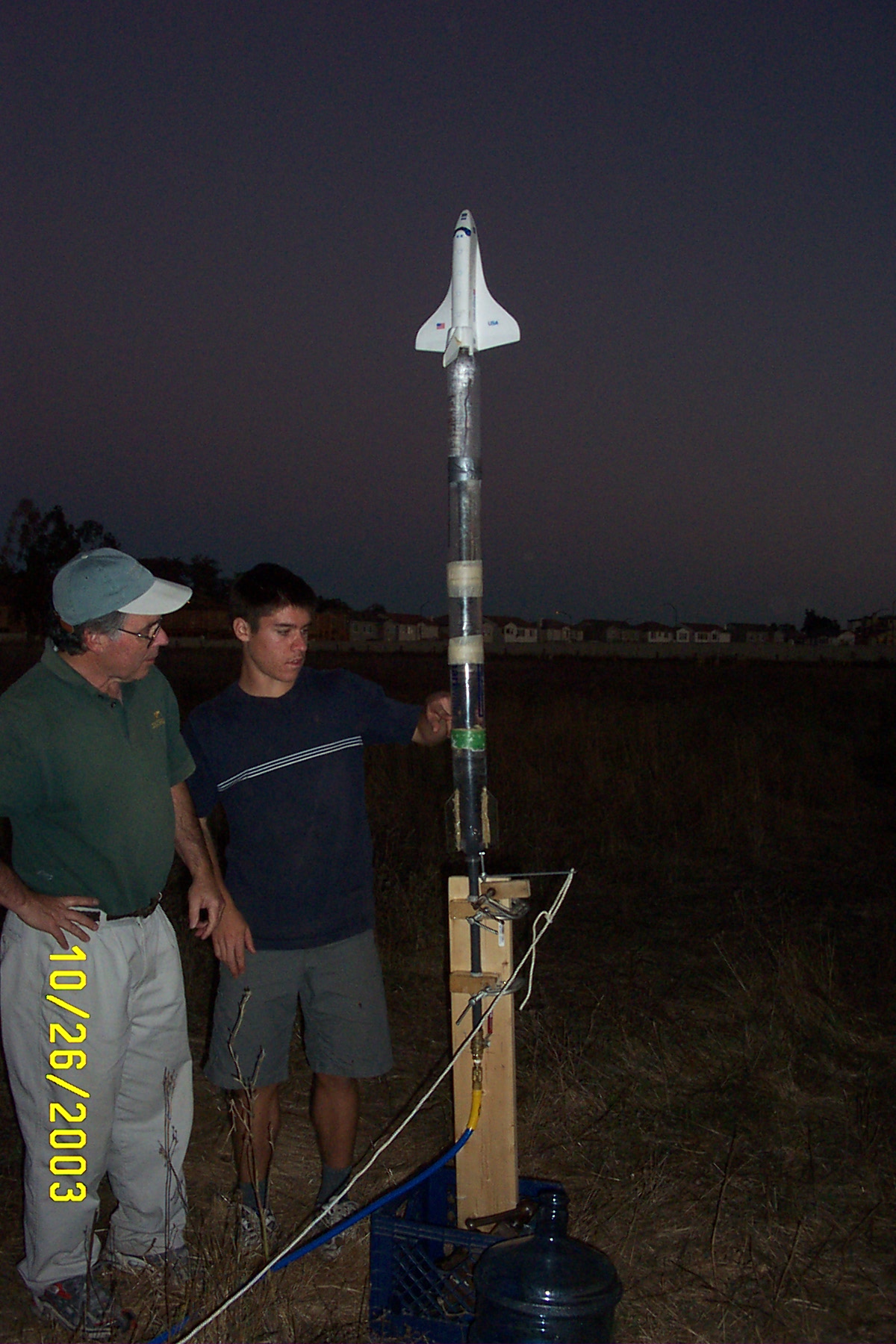
|
In my right hand I have my newest water rocket (still under construction), in my left hand is the old water rocket.
| Old backslider and (new backslider?) |
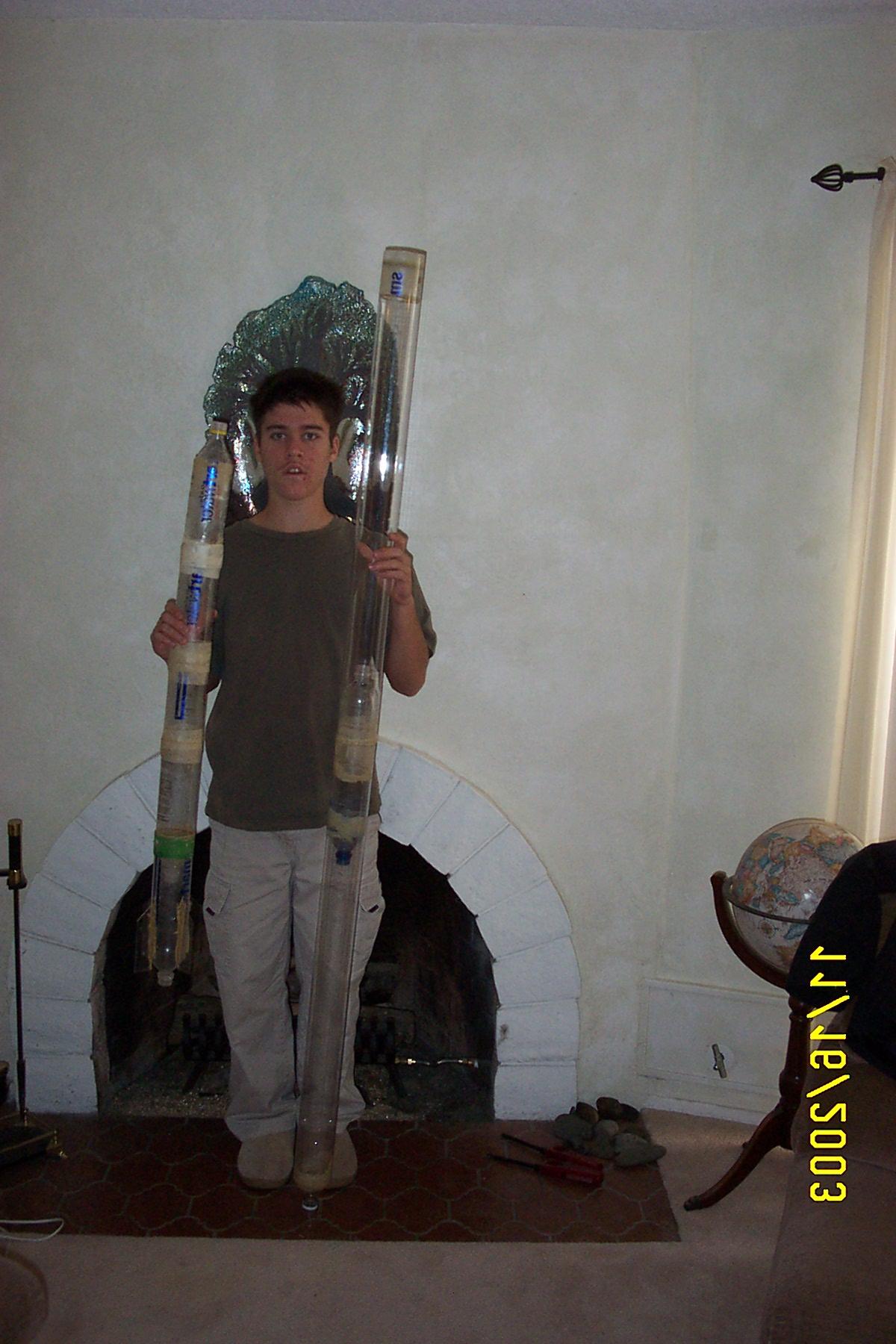
|
This is what happens to a water rocket that does not backslide. As you can see in the photo below the nose pretty much got
destroyed
| Crunch |
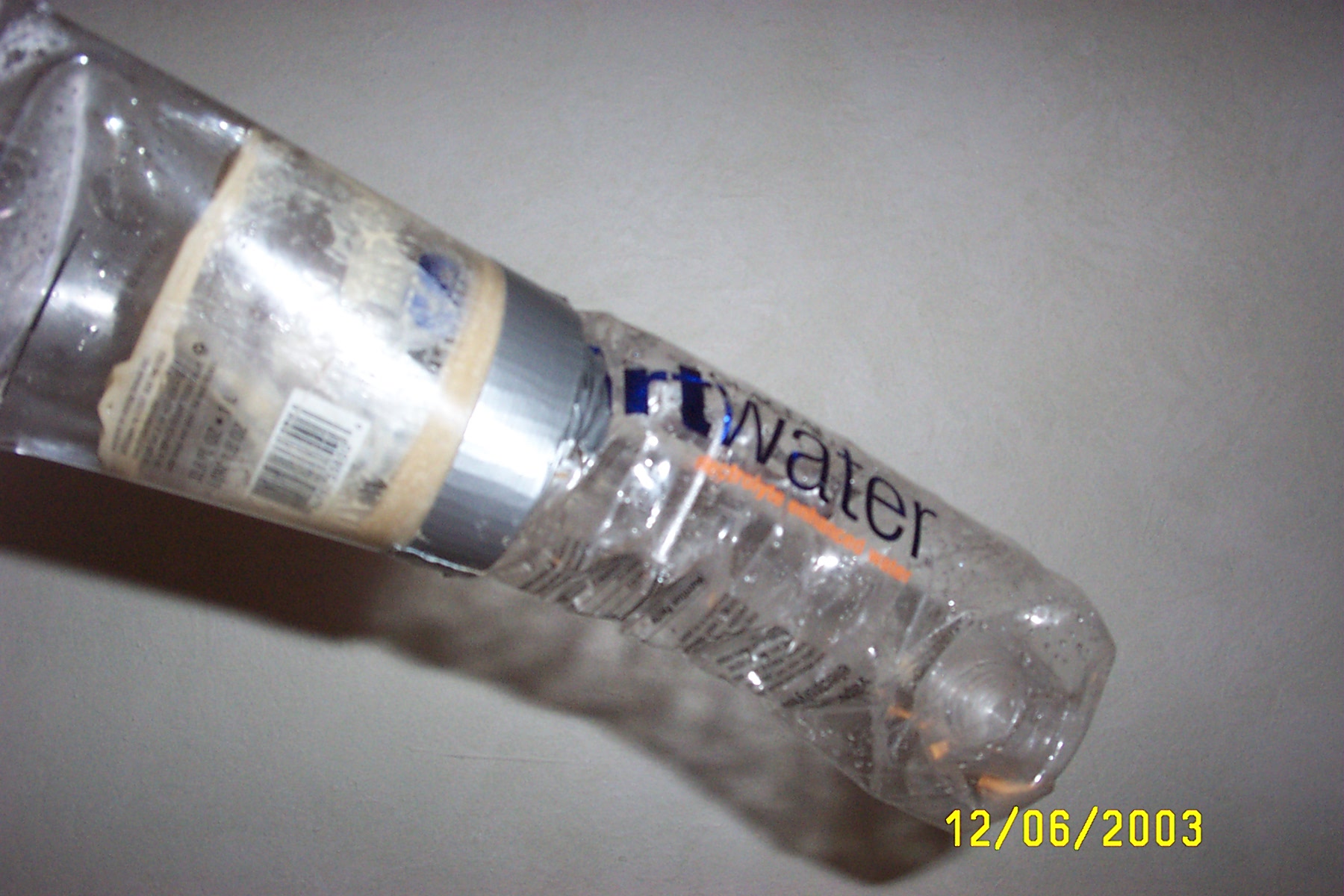
|
This is a picture of me holding my Black Knight water rocket. Which is still waiting to be launched. Hopefully we will launch
her today, and hopefully she will backslide.
| Black Night |
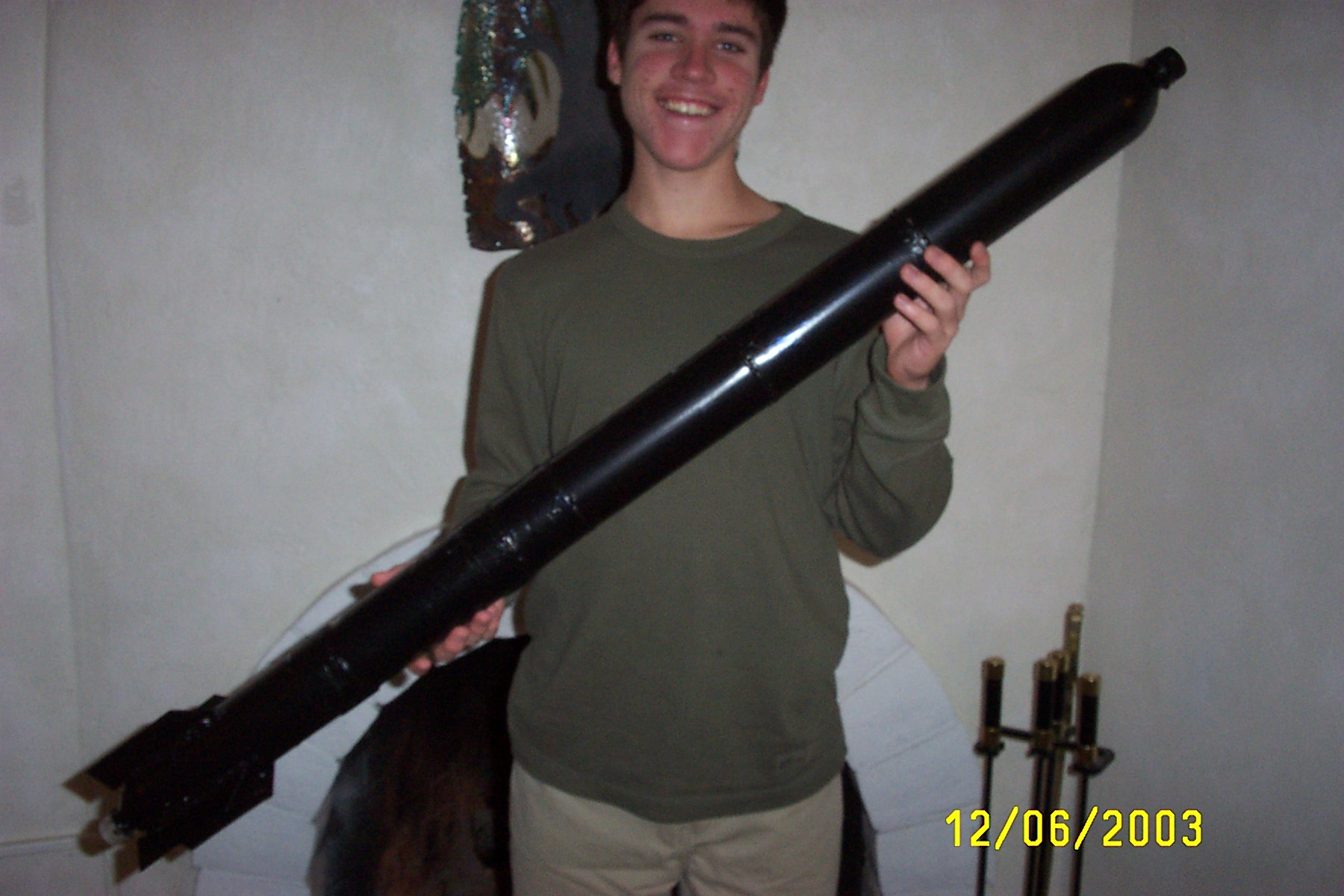
|
Last weekend we launch off our black knight water rocket. The first time we launched it it kind of backslid. When it hit the
nose-cone was damage. We put the rocket on the launcher and popped the nose-cone out. When we launched the rocket again we
added weight to the fins. This moved the center of gravity back below the cent of pressure. When we launched the rocket again
it backslid.
| Blow up on launch pad |
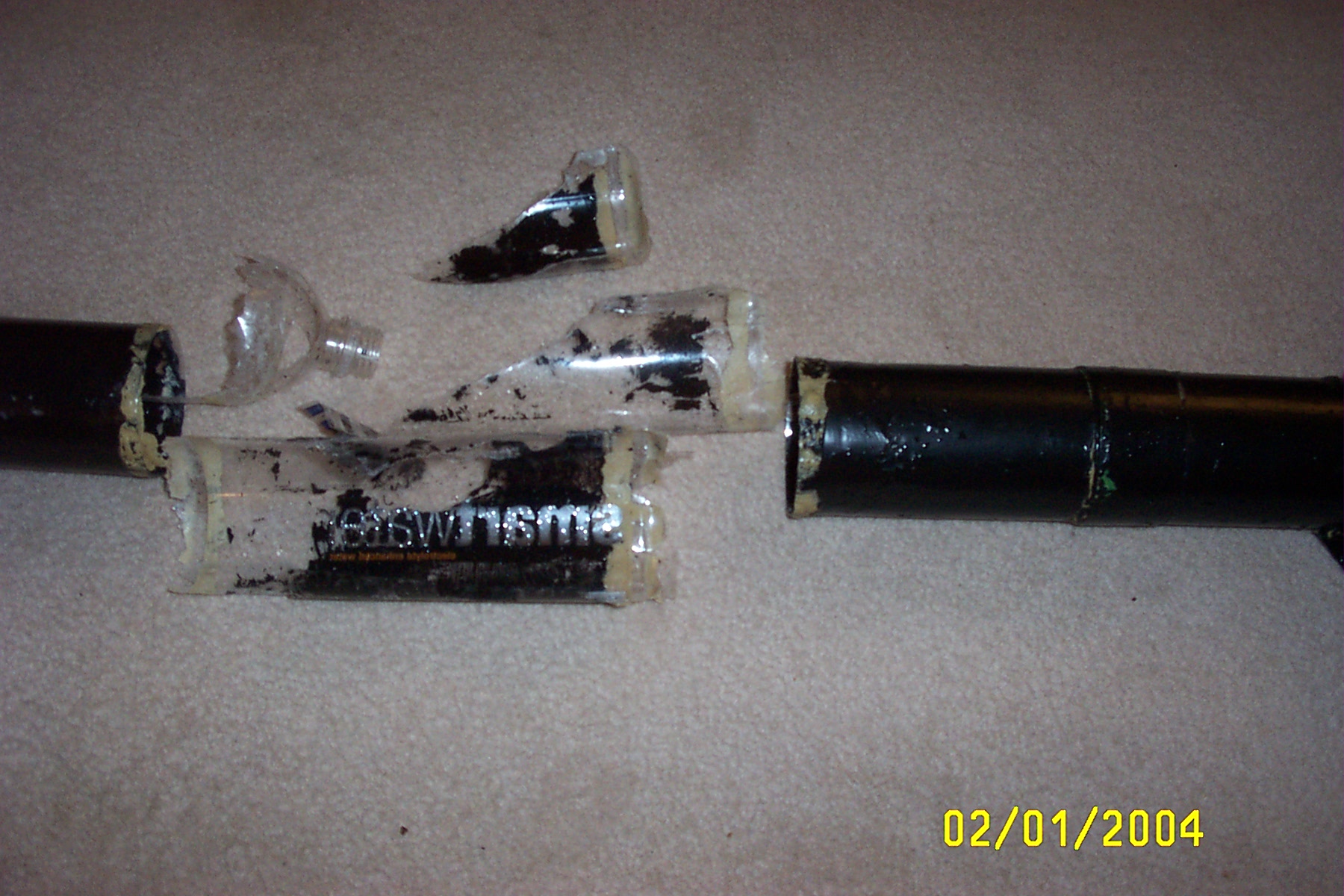
|
Today we pressure tested our water rocket. We pumped it up to about 100 P.S.I. It held for about 20 seconds, and then the
top half of the rocket flew off while the bottom half stayed on the launcher. The bottle between the part of the rocket that
launched off and the part that stayed on the launch pad got torn apart. We are not sure why that particular bottle failed
instead of another bottle, but we are going to need to build a new rocket. This time I think we will make it out of two sections
of plastic mailing tube, and use the tops of a 1 liter 7-up bottle as the nozzle and nose-cone of the rocket.
------------------------------------------------------------
Last weekend we launched our latest Black Night water rocket with a reduced nozzle. We experimented using less water and discovered
that for bigger rockets with small nozzles using less water makes the rocket go higher. We used about 1 liter of water and
got about 500 feet. Maybe higher! On our last launch our rocket went so high that we lost it on a house. The rocket was in
the air for about 25 seconds. That's a long time, espcialy for a rocket using a backslider recovery system! We got some cool
video of the launch, which I will get on my site as soon as possible.
Click below to play video. The video is 1.24 migabytes
click here to play video
To play this video you will need realone player. You can download a 14 day free trail from their web site. Click here to go
to their web site and download realone player.
______________________________________________________________________
This weekend we launched off our first FTC rocket. It was an interesting day. The first two launches the rocket backslid.
On the third launch we tried using about a cup of water. The rocket slot off the launch pad like a bullet being fired from
a gun barrel. It was a beautiful flight. The rocket went straight up. It began to backslide and then it came down nose first
and stuck into the ground like a spear. The nose-cone was twisted like a medal frame work after a hurricane. I think that
the rocket came down nose first because the center of gravity moves forward as the rocket accelerates. So when we used less
water the rocket accelerated faster, so the center of gravity moved foward of the center of pressure and as a result the rocket
came down nose first. We will have pictures of the twisted nose-cone soon.
This is a picture of the nose-cone after the rocket came down nose first.
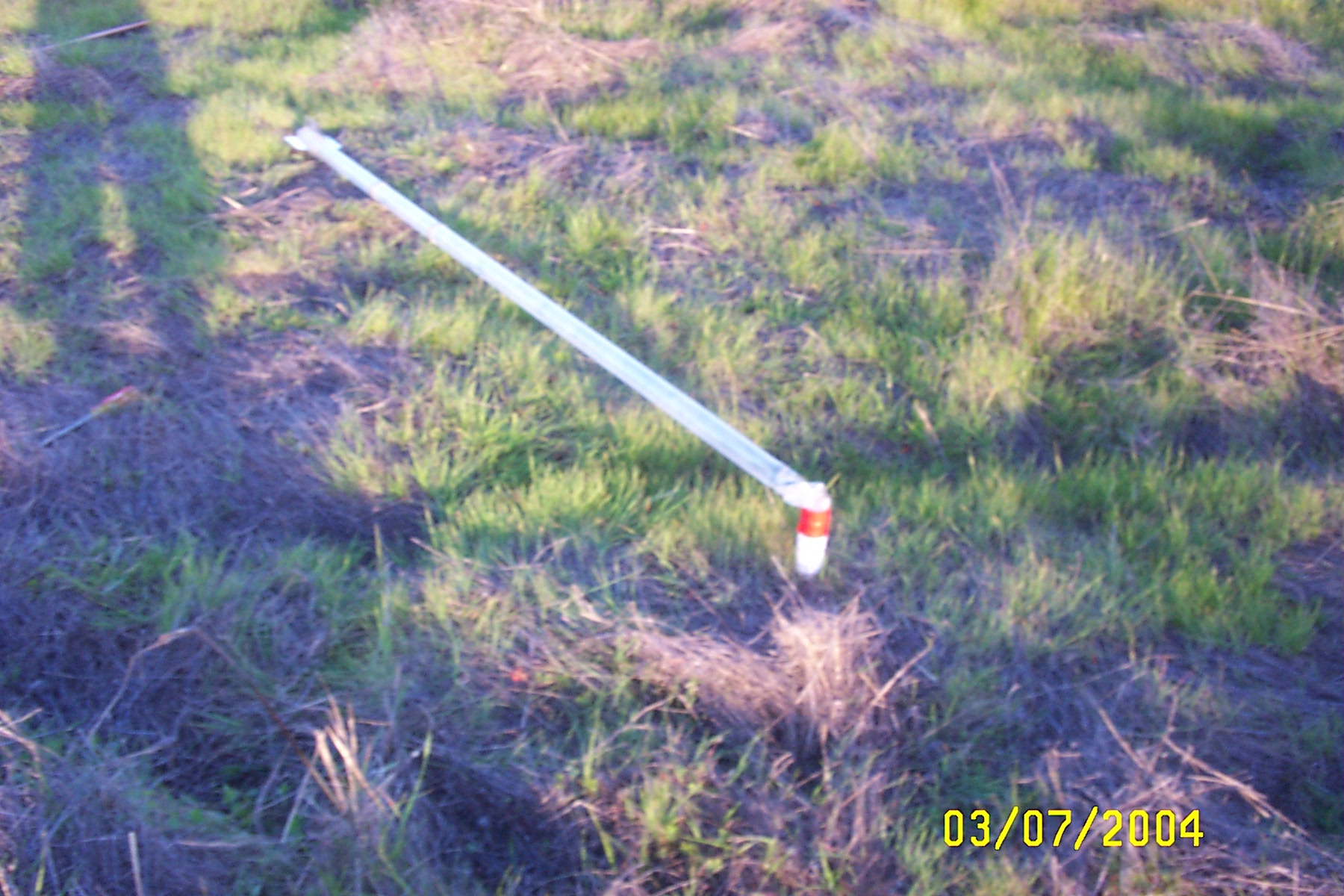
This is a close up of the nose-cone.
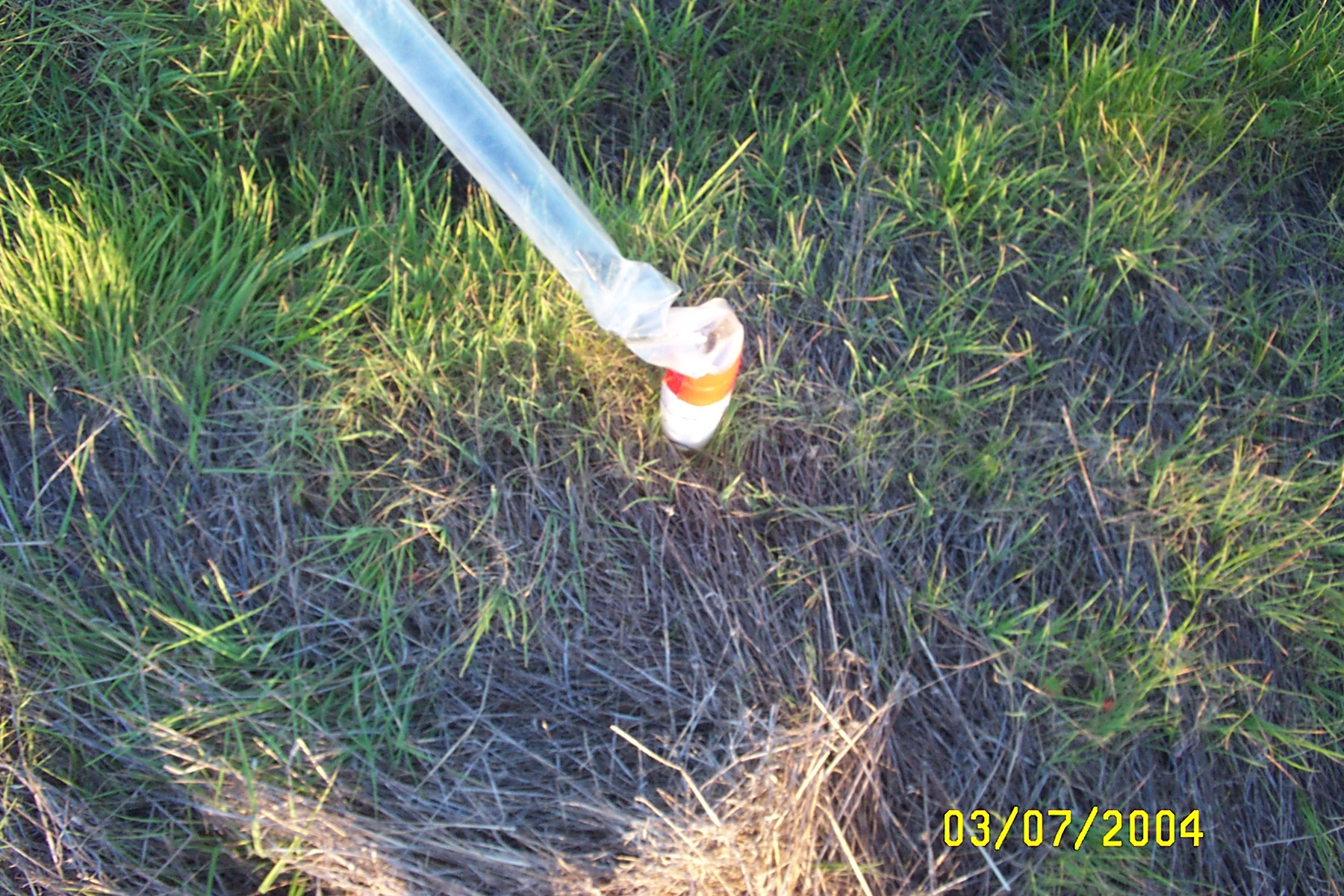
This weeken we launched off our second FTC water rocket. We nick named our rocket the Red Barron named after the famous Germen
fighter pilot. The weekend before we had launched and our rocket had plumited nose-first. To mare sure that our rocket would
backslide we used the spread sheet that my dad had made to calculate the center of gravity. The spread sheet takes into acount
the fins and the nose-cone. We also wanted to test our new T-nozzle design. If you are not farmilar with T-nozzles it is basicaly
a small nozzle that sits on the top of the launch tube. As the rocket lifts off the launch tube the flang on the T nozzle
catches on the neck of the soda bottle. The advantage of using a T-nossle is you can take advantage of the innitial burst
of the launcher, and can benift from a reduced nozzle. A reduced nozzle is an advantge because it alows for a long burn time
and low drag. We were very happy with our results from our T-nozzle. Our next step will be to design a super-sonic T-nozzle.
I will try to document our FTC rocket and T-nozzle design with a digital camera. So come back soon.
Below are some great links to other water rocket sites
Robert Youens Water Rocket Page
Water Rocket Garage
Bristols Water Rockets Index
Water Rocket Index
Clifford Health Water Rocket Page
Ulrich Hornstein Water Rocket Homepage An exelent site
NPL Water Rocket Challenge 2003
Experimental Water Rockets
Nick's Water Rocket Site Lots of info
I am not really into solid fuels rockets, but I thought that this was a cool site, so I added it to my links.
Send feedback!
|

